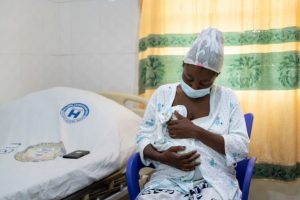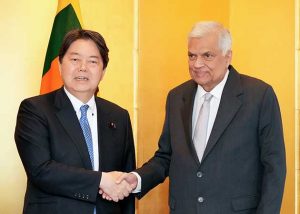- MultiChoice Group, the largest producer of original content on the African continent, is set to debut SHAKA ILEMBE, its biggest ever primetime–drama series.
- Created by the award–winning South African Emmy and Oscar nominated team at Bomb Productions, with global star Nomzamo Mbatha taking on double billing as lead actress and Executive Producer.
The Johannesburg Stock Exchange listed MultiChoice Group is about to debut it's biggest ever prime–time drama series, Shaka Ilembe, an epic 12–part tale that follows the origins story of the legendary African monarch and military strategist, King Shaka. Six years in the making, the highly anticipated series boasts the talents of some of South Africa's biggest stars, including Coming 2 America lead actress Nomzamo Mbatha.
With the epic series launching across sub–Saharan Africa on MultiChoice's video entertainment service DStv this June, Shaka Ilembe is already attracting significant interest outside of the continent. MultiChoice Studios, the busy sales and distribution arm of the sub–Saharan business, is hard at work introducing the title to international buyers at film markets from Cannes to Los Angeles, building on a growing MultiChoice slate of original production exports including the Emmy nominated Reyka and the Deon Meyer penned Trackers.
For Nomsa Philiso, CEO of MultiChoice General Entertainment, Shaka Ilembe offers audiences worldwide the opportunity to immerse into a rich dynastic African story, set in the 1700's.
"We are confident that this series will travel. It speaks, not only the heritage of the Zulu Nation, but to the fascination that the world has always had with King Shaka. It speaks to Africans owning the stories that their ancestors lived. And it celebrates that, long before colonialism, beyond the pages of history, there was a majestic ancient era of African Kings and Queens, warriors, healers, and leaders who lived, loved, ruled, battled, and above all, entrenched a legacy and culture that endures even today. Further, the series was filmed in isiZulu so it carries a distinct language identity, but it will be sub–titled in multiple languages so audiences from across the globe can enjoy it."
Central to the Shaka Ilembe story is actress Nomzamo Mbatha, who balances her Executive Producer responsibilities with fulfilling a life–long ambition to play King Shaka's beloved mother, Queen Nandi.
Speaking to her dual roles on Shaka Ilembe, Mbatha says, "This series is rich in depth, and was shot in 4K on a tremendous scale that fuels the narrative. From the fierce battlefield choreography and the meticulous accuracy of the wardrobe to the resonance of the script, it's remarkable. And while this is a fictional story, it's inspired by real events, people, and places. Already, ahead of our domestic launch audiences at home are very supportive because, they know like I do, that TV series like Shaka Ilembe transcends entertainment, and delivers representation, diversity, and progress."
Mbatha leads off a top–flight ensemble cast featuring some of the country's most charismatic leading men "" Lemogang Tsipa, Senzo Radebe, Wiseman Mncube, Thembinkosi Mthembu and Mondli Makhoba alongside powerful character actresses Khabonina Qubeka, Sthandiwe Kgoroge, Dawn Thandeka King and rising star Hope Mbhele. Meanwhile, playing the boy destined to be King, is gifted young newcomer Ntando Zondi whose prodigious talent was unearthed during the filming of the series.
Filmed in South Africa, SHAKA ILEMBE features much of the country's magnificent wildlife and scenery, including the mountains, savanna, and coastline of the lushly beautiful province of KwaZulu Natal, home to the majority of South Africa's Zulu people. Key filming locations here included the towns of Eshowe, Nkandla Forest, Port Edward, Drakensburg, Mooi River and Zulu Falls.
Meanwhile other parts of the series were shot on a purpose–built backlot near the UNESCO World Heritage Site "The Cradle of Humankind" where Emmy and Academy nominated showrunners Bomb Productions hosted the King of the Zulu Nation, His Excellency Misuzulu kaZwelithini, during a special visit to the set for the Royal to see first–hand the level of detail and care that was employed to ensure that the authenticity of the set.
For Mauro Black, MultiChoice Studios Content, Sales, and Distributions Director, it is this credibility of intention and execution that makes SHAKA ILEMBE a powerful cultural export.
"International buyers are discerning about what they will bring their local audiences from the global TV marketplace. So, from inception, SHAKA ILEMBE was crafted to weld an immense depth of oral, written and illustrated Zulu history into the framework of a highly watchable prime–time drama. The result is a deeply meaningful but profoundly enjoyable title that should win fans in markets as diverse as Africa, the Caribbean, Europe, Asia, and the Americas."
With over 8000 people contributing their skills to create Shaka Ilembe, the series has already won the support of five of South Africa's biggest brands (Telkom, LottoStar, Grant's Whisky, Toyota SA and Santam) who all signed on as commercial partners within days of seeing an extended preview of the series. In addition, it's Academy Award and BAFTA nominated Creative Director Angus Gibson and Sundance winning Executive Producer Desiree Markgraaff have drawn from the best of South Africa's talent, including acclaimed Zulu musician Mbuso Khoza whose skill and vision drives the series soundtrack.
ENDS
Attachment

GLOBENEWSWIRE (Distribution ID 8851223)



